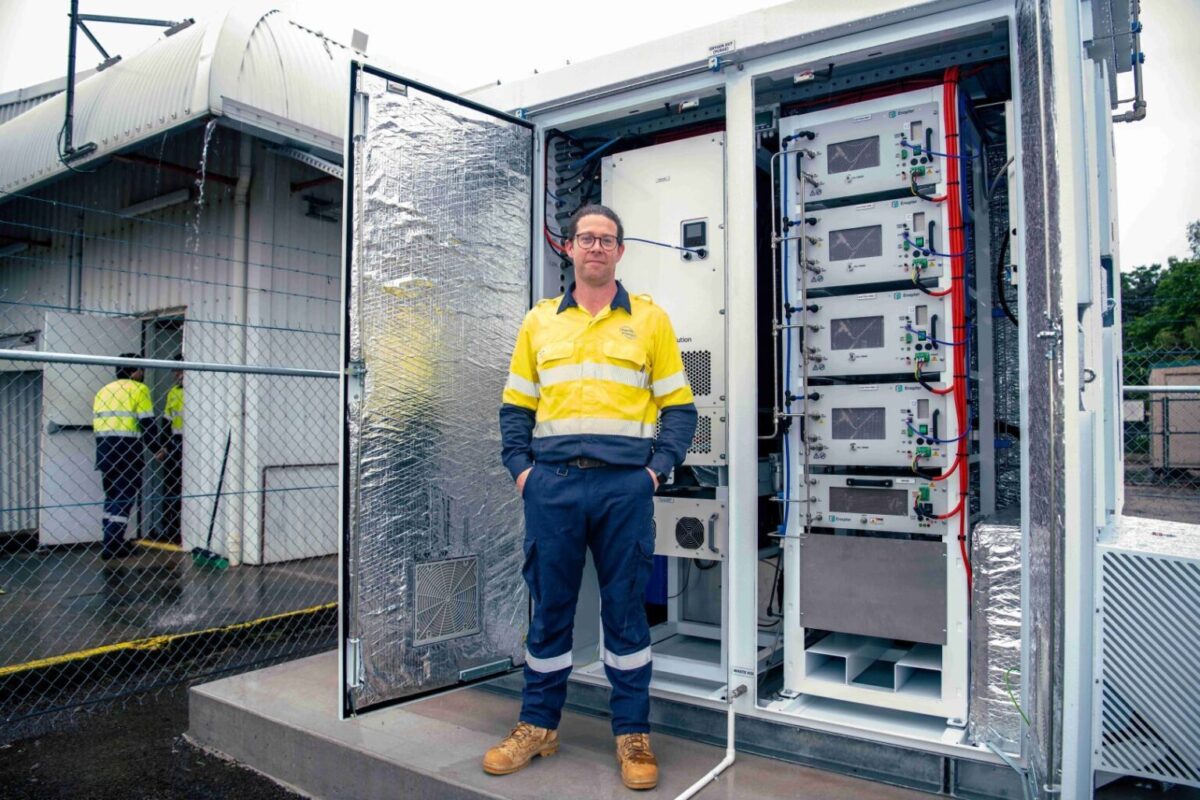Pacific Energy delivers first hydrogen standalone power system – pv magazine International
Pacific Energy has deployed a first-of-a-kind containerized hydrogen electrolyzer and fuel cell as part of a tech development project that is exploring the feasibility of using hydrogen as a clean energy source and storage solution in northern Australia.
January 29, 2024
Australia’s Pacific Energy has designed and delivered its first hydrogen standalone power system (H2 SPS) to serve as a platform to study the potential benefits of green hydrogen as an energy source, particularly for small regional and remote grids, which are common throughout Australia’s Northern Territory.
The pilot 5 kW fuel cell with 8 kWh of hydrogen storage system has been installed at the Charles Darwin University’s (CDU) REMHART (Renewable Energy Microgrid Hub for Applied Research and Training) facility in Darwin. There the system can convert power from the university’s specialised renewable energy grid testing facility into green hydrogen.
Professor Suresh Thennadil, director of CDU’s Energy and Resources Institute (ERI) which will operate the generator and hydrogen storage system for industry partners, students and researchers, said the system will play an important role in further developing a sustainable and efficient energy cycle for hydrogen production and utilisation.
“The installation of a containerised hydrogen electrolyzer and fuel cell system significantly enhances our ability to study hydrogen production and its feasibility as an energy source for fuelling the grid,” he said. “This will also enable us to better understand the challenges and intricacies associated with incorporating hydrogen as an additional energy source as well as the durability of electrolyzers and other components under local climatic conditions. This upgrade provides a unique and flexible platform to study renewable energy systems, particularly small regional and remote grids, which are common throughout the NT.”
Pacific Energy Chief Executive Officer Jamie Cullen said the transportable containerized H2 SPS is an adaptation of the company’s solar-powered standalone power system, and comprises four electrolyzers developed by Germany-based hydrogen specialist Enapter, a 5 kW fuel cell provided by Swedish company PowerCell Group, a battery and inverters.
The system’s electrolysers use electricity to split fresh water into hydrogen and oxygen gases. The hydrogen component is stored in pressurised containment vessels until it is required to produce power. When power is required, the fuel cell combines the hydrogen gas with oxygen from the air, producing electricity that can then be fed into the grid.
Popular content
Pacific said the system, which has already produced hydrogen and 5 kW of electrical output during testing, has the capability to supply 8.6 kW of three-phase power using its inverters and battery.
Cullen said he expects the system will play a critical role in developing the energy industry’s understanding of hydrogen as a renewable energy source, helping to “overcome some of the challenges we currently face when integrating hydrogen into the renewables mix.”
The company said the modular design of the system means it can be scaled with ease, using the same philosophies, concepts and safety system hardware used in CDU’s model.
The deployment of the Pacific Energy system follows the recent announcement from Boundary Power that it has developed a modular standalone power system that integrates solar with a hydrogen electrolyzer and storage system.
Boundary Power said its system, developed in conjunction with energy storage system specialist Lavo and inverter manufacturer Selectronic Australia, utilises solar power and a renewable hydrogen hydride battery to store and generate electricity when required, , doing away with the traditional back-up diesel generator.
This content is protected by copyright and may not be reused. If you want to cooperate with us and would like to reuse some of our content, please contact: ed*****@pv*********.com.


